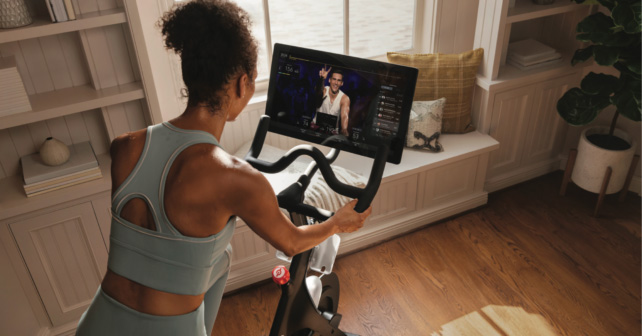It’s time to experiment.
Our economies may be reopening, but we can be confident that consumer behaviour won’t snap back to 2019: not now and not ever. This realization is especially important for companies that rely on strong customer experiences as a competitive differentiator – which is most businesses nowadays.
We’ve learned over the past decade that the customer experience is vital to how people assess value from an offering. It is much more than the ‘soft stuff’, the way someone feels when purchasing a product or service. It involves every aspect of a business – from product design, to sales and service – and how easily customers can engage with the brand across these touchpoints.
Everything a company says and does plays a role in creating a strong customer experience. And these experiences can be just as valuable as the products being purchased. A company can differentiate itself from rivals and boost profit margins by creating tailored, contextualized engagement across multiple touchpoints.
Going online
The biggest pandemic-driven change in consumer habits, of course, is likely to be the shift from in-store shopping to online ordering. How can companies translate their finely-honed in-person customer experiences to ecommerce? They can learn from companies that have already blazed the trail to online success: both digital native firms and those that ramped up their online offerings before this year. Take Warby Parker, which began in 2010 as a direct-to-consumer, online-only seller of competitively priced sunglasses and prescription eyeglasses. The business model depended on a highly differentiated customer experience. The company offered a home try-on program, where the customer picked five frames online and received them in the post to try on. Later, it added an augmented reality app that rendered a pair of glasses on a customer’s face as a live, three-dimensional preview. In 2017, it launched a virtual vision consultation with an optometrist over Google Meet.
Each of these options offer personalized experiences that might be adapted for other products and services. Virtual reality, for example, could become especially important for products with a high-touch in-store experience, such as cosmetics or clothing.
Peloton Interactive is another digital-native company with an enriched customer experience. Other companies sell internet-connected exercise bikes with video screens, but Peloton adds daily spinning classes streamed from its studios. The social connection has proved highly motivating, even though customers rarely interact with fellow spinners. Indeed, many gyms have learned that in-person classes are a key service: the community experience can be almost as valuable to members as the exercise. Those gyms can learn from Peloton about fostering community even while minimizing personal contact.
Businesses of all kinds can also learn from services that are difficult to move to ecommerce, such as groceries. It was back in 1998 that US company Webvan launched, delivering shopping to consumers’ homes. It went bankrupt three years later; at the time, the service was just too cutting edge. Fast forward 20 years and the pandemic has forced people to overcome the mental and logistical barriers to buying groceries online. In the US, a quarter of all e-grocery shoppers in March 2020 were placing their first-ever order, while two-thirds of US consumers reported changing their grocery shopping. This explosion of demand is likely to continue beyond the pandemic. In the US, Instacart and a few other start-ups have emerged in the sector, but the most relevant example may be Walmart, which has diversified its shopping and delivery options in recent years. Before Covid-19 hit, it was already offering home delivery, road-side pickup and even drive-through services. Those investments positioned it perfectly for the pandemic, and its app for groceries has had more downloads in 2020 than any other shopping app in the US. Offering multiple options may be essential for complex ecommerce.
Time for experimentation
Learning from other industries, observing new customer buying habits and aggressively implementing new technologies may be essential for innovative customer experiences in the new economy. Now is a time of great experimentation, including reproducing the all-important social aspects of shopping. A former L’Oréal brand manager, for example, wants to make ecommerce social by letting users shop online in groups with Squadded, a ‘shopping party’ app targeted at Gen Z that enables friends to shop together and comment on how clothes look on each other. It’s similar to group listening at Spotify or Netflix’s party option.
Companies can also learn from non-profit organizations and the entertainment industry. Universities are scrambling to reproduce the college experience online, including one-on-ones with professors and social hangouts. Meanwhile pop stars, who need mass gatherings to promote their music, are offering online concerts with chat rooms and social media support – while DJs are throwing Instagram dance parties that draw hundreds of thousands of virtual revelers.
The gradual emergence from lockdown offers companies a window for experimenting with their offerings. They will want multiple options to address the altered landscape of habits. Hybrid online/in-person purchasing of products and services may be a smart choice, but will take time to develop. We know that people will be more willing to shop online; what we don’t know is whether the pandemic has left us with a lasting uneasiness at being around strangers, or whether most people will actually be desperate to return to crowds.
Even before the pandemic, many companies were figuring out how to ramp up their ecommerce. While it’s essential to get the basics right – an appealing website and an intuitive, reliable shopping interface – customer experience is all-important. Online might seem a cold, functional channel, but there are companies which have already figured out how to create distinctive experiences that reinforce their brands. By creating new consumer habits, the pandemic has made this challenge urgent.




